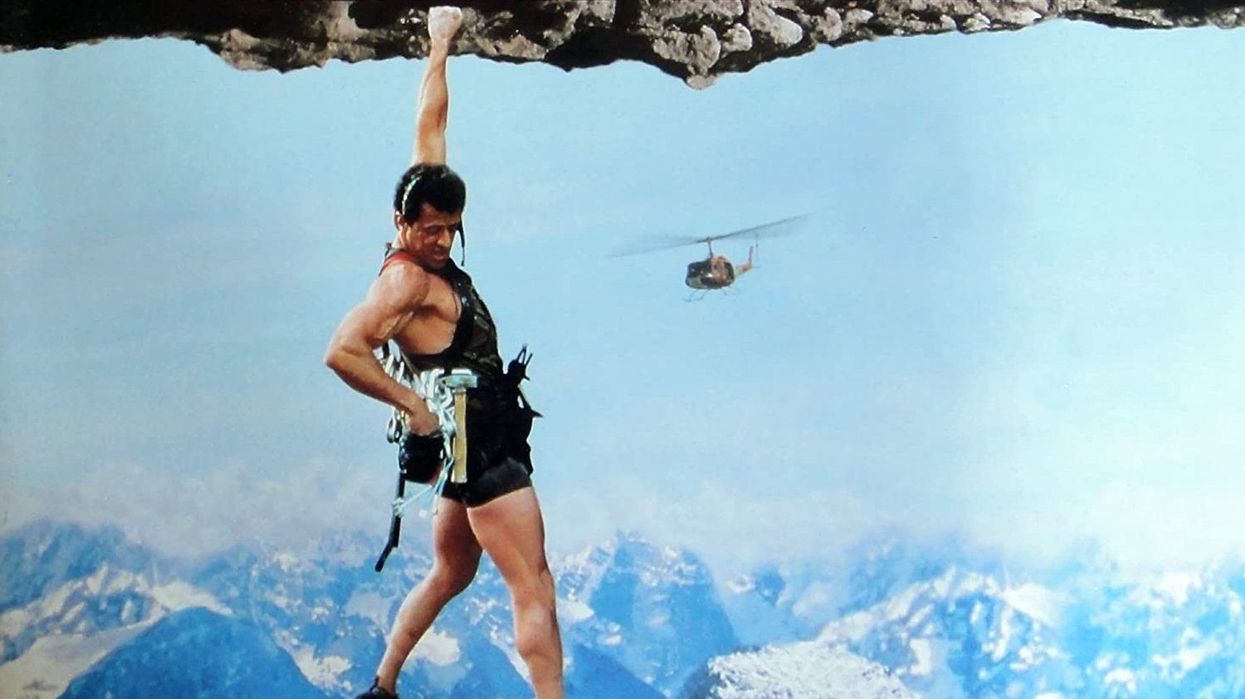What Is a Cliffhanger? Definition and Examples
Film and TV was built on these plot devices.

Cliffhanger
In the world of storytelling, there's a crafty literary device that consistently succeeds in keeping audiences on the edge of their seats, eagerly awaiting what comes next.
This device is known as a cliffhanger.
It can be one of the coolest tools you have in your screenwriting belt. It leaves the audience desperate for more and allows you to layer in suspense.
Today, we dive into the art of the cliffhanger, exploring its definition, history, and the pivotal role it plays in weaving captivating tales that transcend time and genre.
So, hang on for dear life!
Cliffhanger definition
A cliffhanger is a narrative device often used in storytelling, most famously in film, television and literature, where a story is cut off suddenly at a moment of maximum suspense or uncertainty.
This technique leaves the plot unfinished and at a high point of tension or revelation, implying that there might be an even greater story coming to a future film or season, a strong indication to a public that there’s plenty more to look forward to.
The History of Cliffhangers

'Star Wars: The Empire Strikes Back'
Disney
The origin of the cliffhanger can be traced back to the serialized novels of the 19th century, where authors like Charles Dickens ended each installment with unresolved tension, ensuring that readers would eagerly await the next part.
Why Do Filmmakers Use Cliffhangers
 'Lost'ABC
'Lost'ABCThe most basic goal of a cliffhanger is to keep viewers watching. By not resolving some part of the story, it pushes people to watch the next part to see how the story ends.
Your aim, after all, is to get them to look forward to the next episode or season – so that they’ll keep watching (or streaming) to find out the answers.
This works best in episodic TV shows, where the audience tunes in again, week after week, month after month. Or in between movie sequels.
What Are the Types of Cliffhangers?

'Inception'
Warner Bros.
- Plot Cliffhanger: These involve leaving a central plot point unresolved. For instance, a detective show might end an episode before revealing the identity of the criminal.
- Character Cliffhanger: This type focuses on the fate of a character, like ending an episode with a character in a life-threatening situation.
- Emotional Cliffhanger: These play on the audience's emotional attachment to the story or characters, such as ending on an unresolved romantic confession.
- Twist Cliffhanger: This type introduces a shocking twist or revelation that changes the audience's understanding of the story, prompting them to return for explanations.
Examples of Cliffhangers
Examples in Television
- Game of Thrones: Known for its unexpected plot twists, the show frequently used cliffhangers to keep viewers engaged. A notable example is the end of Season 5, where Jon Snow is betrayed and left presumed dead for good, leaving viewers debating his fate for months.
- Breaking Bad: This series effectively used cliffhangers to build tension, with one memorable instance being the end of To'hajiilee, where a shootout leaves the outcome uncertain.
- Friends: Even sitcoms use cliffhangers. The end of Season 4, where Ross says Rachel's name instead of Emily's at the altar, is a classic example.
Examples in Film
- Avengers: Infinity War: The film ends with Thanos succeeding in his plan, and half of all life in the universe disappearing, leaving audiences in shock and anticipation for the next installment.
- The Empire Strikes Back: This classic Star Wars film ends with Han Solo captured and Luke Skywalker learning about his parentage, setting up a high-stakes conclusion in the next movie.
- Inception: The film concludes with a scene that leaves the audience questioning the reality of the protagonist's experience, a thought-provoking cliffhanger that sparked much debate.
Cliffhangers are a great device that can help you unlock an exciting end to an episode or leave you holding your breath between scenes.
Let me know your favorites in the comments.
- 'Shutter Island' Ending Explained ›
- Indie Film for the Masses: Lessons We Learned Making a Movie for TikTok ›
- What Is the Meaning of a Slow-Burn Movie or TV Show? ›











